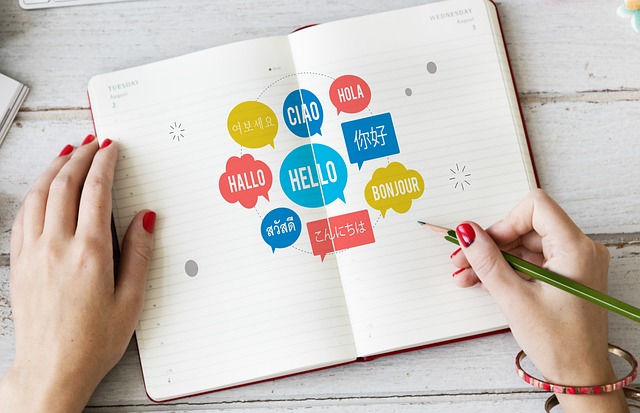Fluency in a language is the ability to express oneself easily and articulately. It is a crucial skill in language learning and communication. Fluency strategies are essential for language learners to improve fluency and language proficiency. Effective communication strategies and language fluency techniques play a key role in fluency development and improving speaking fluency. In this article, we will explore various strategies, techniques, vocabulary, listening, and speaking skills to enhance language fluency.
Main Points
- Fluency Strategies
- Language Fluency Techniques
- Effective Communication Skills
- Improving Speaking Fluency
Effective Communication Techniques for Improving Fluency
Effective communication is essential for improving language fluency. Employing the right fluency strategies can greatly enhance your communication skills. Here are some techniques to help you improve fluency:
- Practice speaking regularly to build confidence.
- Expand your vocabulary by learning new words every day.
- Engage in conversations with native speakers to enhance fluency.
- Listen actively and pay attention to your pronunciation and intonation.
- Read aloud to improve verbal fluency and articulation.
By incorporating these techniques into your daily routine, you can develop greater fluency in your language skills and become a more effective communicator.
Mastering the Art of Public Speaking: Strategies for Enhanced Fluency
Public speaking is a valuable skill that can be enhanced through effective communication strategies and fluency development. Utilizing effective language use is essential in captivating an audience and delivering a compelling message.
Effective Communication Strategies
When honing the art of public speaking, it is essential to employ communication strategies such as active listening, clear articulation, and confident body language. These strategies contribute to overall fluency development and help speakers connect with their audience on a deeper level.
Enhancing Fluency through Language Use
Employing a varied and dynamic vocabulary, using appropriate tone and pace, and incorporating storytelling techniques are all impactful ways to enhance fluency development and engage an audience effectively.
Conclusion
Mastering the art of public speaking requires dedication to communication strategies, ongoing development of fluency, and a commitment to effective language use. By incorporating these elements, speakers can deliver powerful and impactful presentations that resonate with their audience.
The Power of Vocabulary Expansion in Achieving Fluency
Language proficiency plays a critical role in effective communication skills. One of the key techniques in achieving language fluency is vocabulary expansion. By continuously learning and incorporating new words into your vocabulary, you can enhance your ability to express ideas and thoughts clearly and accurately.
Furthermore,
Expanding your vocabulary allows you to better comprehend and articulate complex concepts and diverse topics, ultimately leading to a more nuanced and comprehensive communication. In addition, a rich vocabulary enables you to convey your thoughts with precision, depth, and eloquence, significantly enhancing your overall fluency in a language.
language proficiency, effective communication skills, language fluency techniques are crucial aspects in mastering a language. By prioritizing vocabulary expansion, individuals can significantly improve their ability to communicate confidently and effectively in any given context.
Incorporating Active Listening Skills to Enhance Speaking Fluency
When it comes to improving speaking fluency, incorporating active listening skills can be a game-changer. By honing in on your ability to actively listen, you can enhance your speaking fluency in a number of ways. From improving pronunciation to boosting vocabulary, active listening plays a crucial role in language acquisition.
The Benefits of Active Listening for Speaking Fluency
1. Enhanced Pronunciation: Actively listening to native speakers can help you mimic their pronunciation, leading to clearer and more fluent speech.
2. Expanded Vocabulary: Through active listening, you can pick up new words and phrases, enriching your speaking abilities.
3. Smooth Conversations: By focusing on active listening, you’ll be better equipped to engage in fluid and natural conversations, making you a more confident speaker.
How to Incorporate Active Listening into Your Language Learning Routine
- Engage with Native Speakers: Seek out opportunities to listen to and engage with native speakers, whether through language exchange programs or social gatherings.
- Utilize Audio Resources: Make use of podcasts, audiobooks, and other audio resources to actively listen to native speakers in various contexts.
- Practice Reflective Listening: Train yourself to not just hear, but truly understand and process what you’re hearing, which will in turn enhance your speaking fluency.
By incorporating active listening into your language learning journey, you’ll find yourself taking significant strides towards improved speaking fluency and overall linguistic proficiency.
Utilizing Technology as a Tool for Improving Language Fluency
In today’s digital age, technology has become an invaluable tool for language learners seeking to improve their fluency. With the plethora of language learning apps, online resources, and virtual exchange programs available, individuals now have access to a wide range of tools that cater to their specific needs and learning style. These technological advancements have revolutionized the way language fluency is achieved, making the process more interactive, accessible, and effective.
The Benefits of Technology in Language Learning
One of the key benefits of utilizing technology for language fluency is the ability to practice and engage with the language in a real-world context. Through language learning apps and online platforms, individuals can connect with native speakers, participate in virtual language exchanges, and immerse themselves in the language without having to travel to a foreign country. Additionally, these tools often incorporate interactive exercises, games, and quizzes that make the learning process enjoyable and engaging.
Moreover, technology allows for personalized and self-paced learning experiences, where individuals can tailor their language learning journey to fit their schedule, goals, and preferences. The accessibility of online resources and language learning apps also means that individuals can practice and improve their language skills anytime, anywhere, providing a level of flexibility that traditional language learning methods may not offer.
In conclusion, technology serves as a powerful tool for improving language fluency, offering a wide range of benefits such as real-world practice opportunities, interactive learning experiences, and personalized approaches to language acquisition. By embracing and utilizing these technological advancements, individuals can enhance their language skills and achieve fluency in a more accessible, effective, and enjoyable manner.
Conclusion
In conclusion, implementing fluency strategies such as shadowing, chunking, and active listening can significantly improve one’s speaking fluency in English. By consistently practicing these techniques and expanding one’s vocabulary, individuals can enhance their overall language skills and become more confident and proficient speakers. It is important to remember that fluency is not just about speaking quickly, but also about speaking accurately and effectively. Therefore, utilizing these strategies and techniques will undoubtedly contribute to achieving fluency in English.
Frequently Asked Questions
What are fluency strategies?
Fluency strategies refer to techniques and methods used to improve a person’s ability to speak or communicate in a fluent and natural manner in a foreign language.
How can I develop fluency in a new language?
To develop fluency in a new language, it is important to practice speaking and listening regularly, engage in conversations with native speakers, and use fluency-building exercises and techniques such as shadowing and role-playing.
What are some common challenges in improving fluency?
Common challenges in improving fluency include lack of confidence, limited vocabulary, fear of making mistakes, and difficulty in understanding natural speech patterns. Overcoming these challenges requires consistent practice, exposure to the language, and seeking support and feedback from language instructors or peers.

